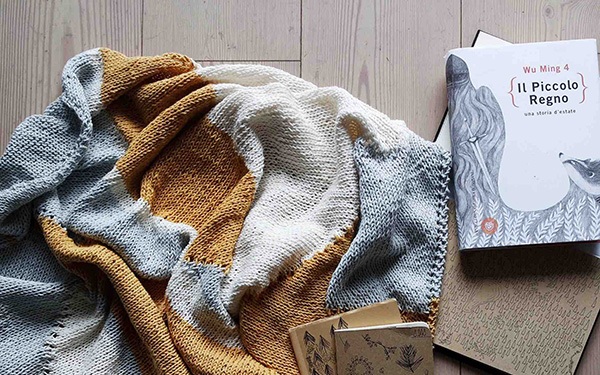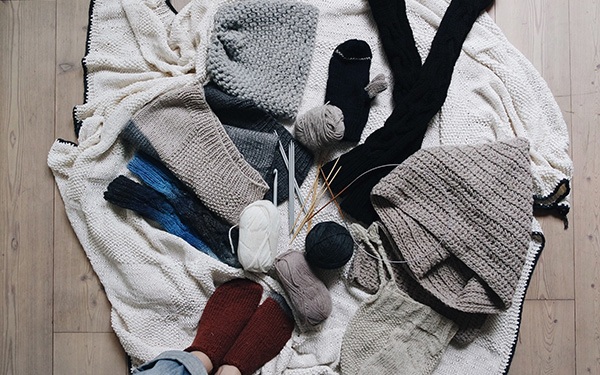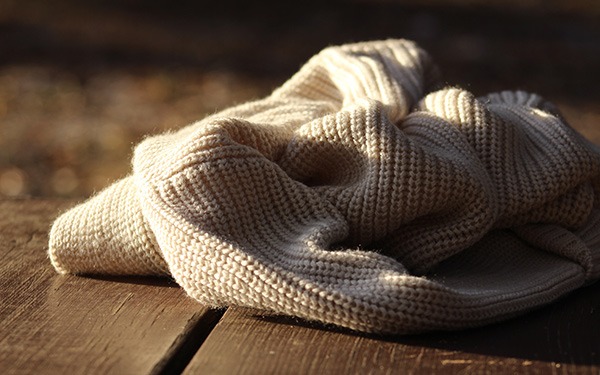Sewing with knits can seem like an impossible task.
With such complex fabric and so much room for error, how can you even begin? Once you’re started, how can you avoid the typical pitfalls which turn a strong venture into a disaster?

If you’re wondering what stitches are best or what issues to watch out for, you came to the right place.
This is our complete guide on how to sew knits. Here we break down all the details you need to get started, along with some helpful added suggestions that’ll make your knitwear outstanding.
How to Sew Knits: Tips
Before we get to the step-by-step guide, here are some extras that’ll make your craft easier.
- Using a ballpoint pin is helpful to avoid damaging knit fabric.
- Test your needle on some scrap fabric. If it’s dull, get a new one!
- Test your sewing machine on scrap fabric to make sure it’s working.
- Do not stretch as you sew or resist the feed from your sewing machine.
- Support the wright of the fabric so that it does not fall, and move your stitch while the machine is working.
- If some stretching happens, take the steam function on your iron to steam the seam. The heat and moisture will make it return to its original size.
Sewing with Knits: Seaming
A seam with two parts for woven fabrics is essential to the success and longevity of the knit you’re making.
Getting the hang of good seams is the only way to ensure your final product is professional quality, so as prep work:
- Check the construction of the stitches used to make the fabric you’ve chosen.
- Decide if the stitch you want to use if good for the garment you’re working with.
- The typical stitch has a seam of .25 inches.

Stitch 1: Zigzag Stitch
The zigzag stitch is the key for making sewing knits easier than ever.
What You’ll Need:
- Sewing machine
- Ballpoint needle
- Knit fabric of your choice
- Thread that matches your fabric
Steps:
- Sew one stitch at the length of 1.5 mm and go back over it until the stitch is .5 mm thick
- Create a “zag” of the same length going the opposite direction of the stitch you just sewed on (some sewing machines have built-in zigzag stitches and included zigzag feet to do this automatically)
- Continue on the pattern until your seam is finished
- Remember to backstitch at the beginning and end of every seam
- Trim the extra thread close to the garment
Notes:
This stitch looks similar to the overlock stitch.
Stitch 2: Faux Overlock Stitch
The Faux Overlock Stitch is one of the best ways to ensure that your knit stitches are super secure.
What You’ll Need:
- Sewing machine
- Ballpoint needle
- Fabric of your choice
- Thread that matches your fabric
Steps:
- Without stretching the fabric, begin by creating a zigzag pattern as above
- Go over each zigzag with the machine again to make sure everything is secure
- Use your machine’s inbuilt zigzag and overlock stitches to do this quickly and accurately
- Remember to back stitch at the beginning and end of every seam!
- Trim the extra thread close to the garment
Notes:
This stitch has two optional parallel seams, placed on either side of the faux overlock stitch that secure it.
Here’s a handy video on how to sew the faux overlock stitch with a normal sewing machine:
Stitch 3: Reinforced Straight Stitch
If you don’t know how to sew knits, this is the best stitch for beginners to start with.
What You’ll Need:
- Sewing machine
- Ballpoint needle
- Fabric of your choice
- Thread that matches your fabric
Steps:
- Keep the seam allowance open
- Sew into the fabric one side at a time, so that your thread is alternating on the top and bottom
- Go back over each stitch until it is about .5 mm thick
- Remember to backstitch at the beginning and end of every seam
- Trim the extra thread close to the garment
Notes:
This stitch is perfect for beginners and is already built-in to most sewing machines.

Sewing Knits: Hemming
Hemming using the right seam stitch is important to the integrity of your knitwear.
Add a double fold to all of your hems to easily get rid of extra fabric.
Here are some tips to consider before you get started:
- Consider the fit of the garment. Do you want it to be tight or loose?
- The hem will determine the fit of any garment. Consider how much stretch you want it to have.
Twin Needle: for Fitted Knits
Using a twin needle for your hem is the best stitch to use when sewing a coverstitch. This needle will maximize the hemming capability as well as result in a more fitted garment.
Narrow Zigzag: for Looser Fitting Knits
If you’re planning on stitching a narrower hem, the narrow zigzag is the stitch for you. The narrow zigzag allows your garment more room for a looser fit.
Reinforced Straight Stitch: for Firm Knits
This stitch can be used to create a stretchable hem that is useful for firm knits. However, it is not quite so good for soft and spongy fabrics. Be wise in choosing this stitch when it’s needed.
And there you have it! Get your tools and grab your knitwear – it won’t know what hit it.
Now you know how to sew knits — any questions?
